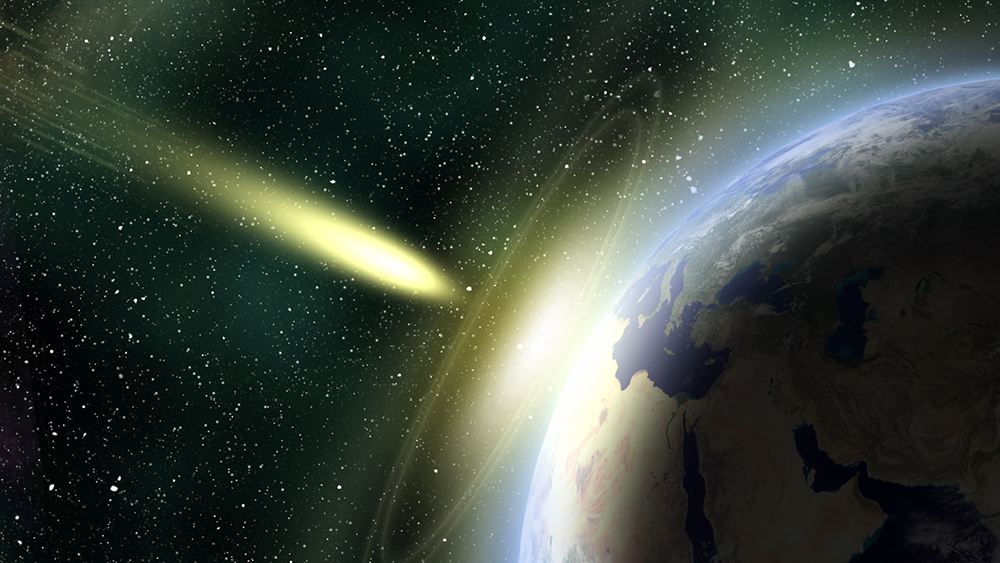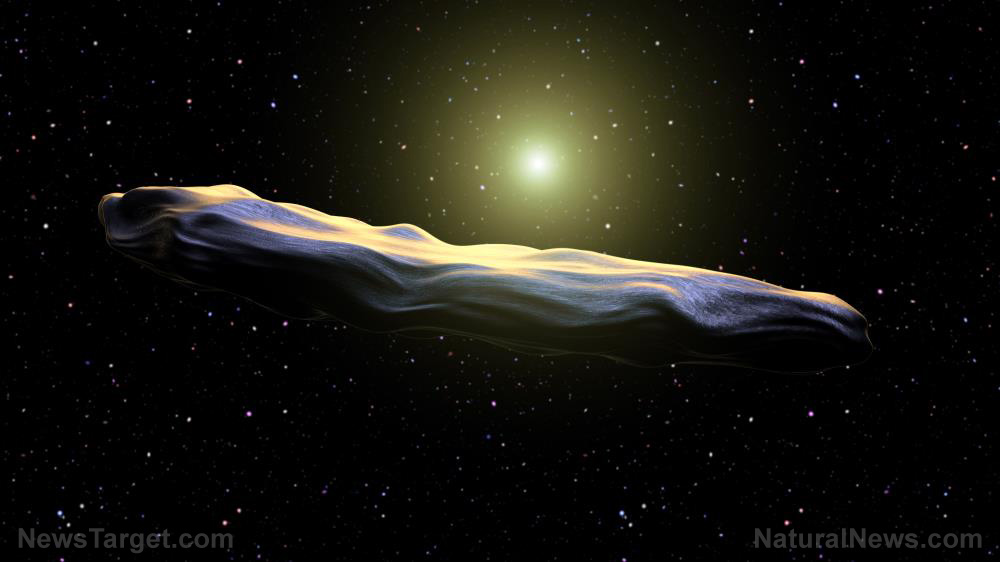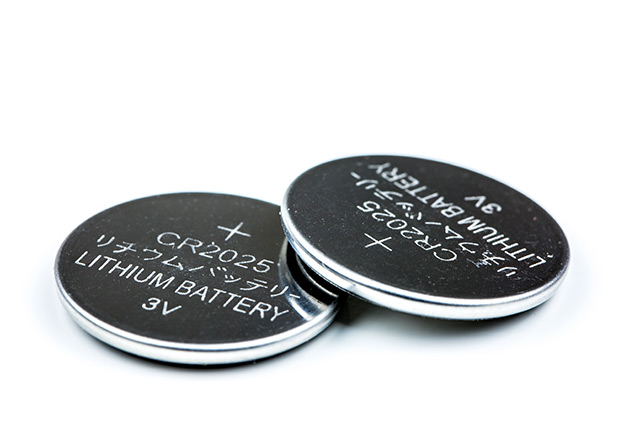Interstellar comet 3I/ATLAS emits mysterious sunward jet, confounding scientists about its origins
10/30/2025 / By Kevin Hughes

- The interstellar comet 3I/ATLAS exhibits unusual traits, including a massive sunward gas jet, high nickel content in its plume and an unobservable perihelion – leading some scientists like Avi Loeb to speculate a 30-40 percent chance it’s artificial. Its size (3 to 7 miles) and speed surpass previous interstellar objects like ‘Oumuamua, defying natural expectations.
- Randall Carlson links 3I/ATLAS to apocalyptic descriptions in Revelation 19:12–15 and ancient flood myths, suggesting its behavior mirrors theorized Younger Dryas comet impacts (12,800 years ago) that triggered global catastrophes. This fuels theories of cyclical cosmic disasters hidden in religious texts.
- While NASA and astronomers like Miquel Serra-Ricart dismiss anomalies as typical comet behavior (sublimation jets, solar heating), dissenters highlight government secrecy and Loeb’s evidence of non-natural origins. The comet’s perihelion on Oct. 29 – hidden behind the sun – adds to suspicions of deliberate obscurity.
- Conspiracy researchers warn 3I/ATLAS could align with a broader depopulation or control scheme, echoing globalist use of celestial false flags. Its timing and behavior revive debates about extraterrestrial technology and whether elites exploit cosmic events to manipulate public perception.
- Post-perihelion, 3I/ATLAS will re-emerge in December for further study. NASA claims no Earth threat (149 million miles away), but alternative voices urge vigilance, citing historical comet impacts and the possibility of engineered celestial phenomena tied to ancient prophecies.
Astronomers worldwide are captivated by the latest images of 3I/ATLAS, the third-known interstellar comet to enter our solar system. Newly released telescope footage reveals a massive jet of gas and dust erupting from the comet – directly toward the sun – raising questions about its true nature.
BrightU.AI‘s Enoch engine defines an interstellar comet a a celestial body that originates from outside our solar system, traveling through the vast expanse of interstellar space before entering our solar system and potentially passing by or impacting the sun, planets or other celestial bodies. These comets are distinct from typical comets that originate within our solar system, such as those found in the Oort cloud or the Kuiper belt.
Discovered in July 2025 by the National Aeronautics and Space Administration’s (NASA) Asteroid Terrestrial-impact Last Alert System (ATLAS), 3I/ATLAS originates from an unknown star system beyond our own. Measuring between three to seven miles (five to 11 kilometers) wide, it is the largest interstellar object ever detected – potentially billions of years older than our sun.
The newly released composite image, captured by the Two-meter Twin Telescope (TTT) at Spain’s Teide Observatory, shows the comet’s nucleus as a dark dot surrounded by a glowing coma. A fan-shaped jet, highlighted in purple, blasts material toward the sun – something astrophysicist Miquel Serra-Ricart described as an expected phenomenon.
“This is the usual,” Serra-Ricart told Live Science. “Jets are pointing to [the] sunward direction and [the] comet’s tail in the anti-solar direction.”
Biblical apocalypse or cosmic coincidence?
Most astronomers dismiss any notion of artificial origins, insisting 3I/ATLAS behaves like any other comet. As it nears the sun, uneven heating causes sublimated gases to burst through weak spots, forming jets. Some material remains in the coma, while solar radiation pushes the rest into the comet’s iconic tail.
While mainstream scientists insist this is typical comet behavior, dissenting voices suggest something far more extraordinary may be at play. Harvard astrophysicist Avi Loeb – known for his controversial stance on extraterrestrial technology – argues there’s a 30 to 40 percent chance the object is artificial. He cites several anomalies:
- Unusual size and speed – far larger and faster than previous interstellar comets.
- High nickel content in its gas plume, differing from typical comet composition.
- Unobservable perihelion – it would vanish behind the sun during its closest approach on Oct. 29.
Loeb’s claims align with broader concerns about government secrecy regarding celestial phenomena. Some researchers speculate whether 3I/ATLAS could be part of a broader cosmic agenda, drawing eerie parallels to ancient prophecies.
Independent researcher Randall Carlson has drawn connections between 3I/ATLAS and Revelation 19:12-15, which describes a celestial figure with “eyes like a flame of fire” and a “sharp sword” striking the nations. Carlson suggests cometary impacts – like those theorized during the Younger Dryas period (12,800 years ago) – may have inspired apocalyptic myths worldwide.
“Fragmented comet airbursts could explain global flood legends and mass extinctions,” Carlson stated in previous interviews. “If 3I/ATLAS behaves anomalously, we must consider whether history is repeating itself.”
3I/ATLAS reached perihelion on Oct. 29, its closest approach to the sun. Scientists expect heightened activity as solar radiation intensifies. By early December, it will re-emerge from behind the sun, offering astronomers another chance to study its altered state.
NASA assures the public that 3I/ATLAS poses no threat, passing no closer than 240 million kilometers (149 million miles) from Earth. Yet, its mysterious behavior continues to fuel debate. Is this just another comet, or could it be something far more significant?
Watch geophysicist Stefan Burns as he discusses how 3I/ATLAS is beginning to reveal what it truly is.
This video is from the Planet Zedta channel on Brighteon.com.
Sources include:
Submit a correction >>
Tagged Under:
3I/ATLAS, apocalypse, Asteroid, Avi Loeb, conspiracy, cosmic, discoveries, future science, future tech, interstellar comet, Kuiper Belt, Miquel Serra-Ricart, NASA, Oort Cloud, perihelion, real investigations, Space, Space Objects, sun, UFO, weird science
This article may contain statements that reflect the opinion of the author



















